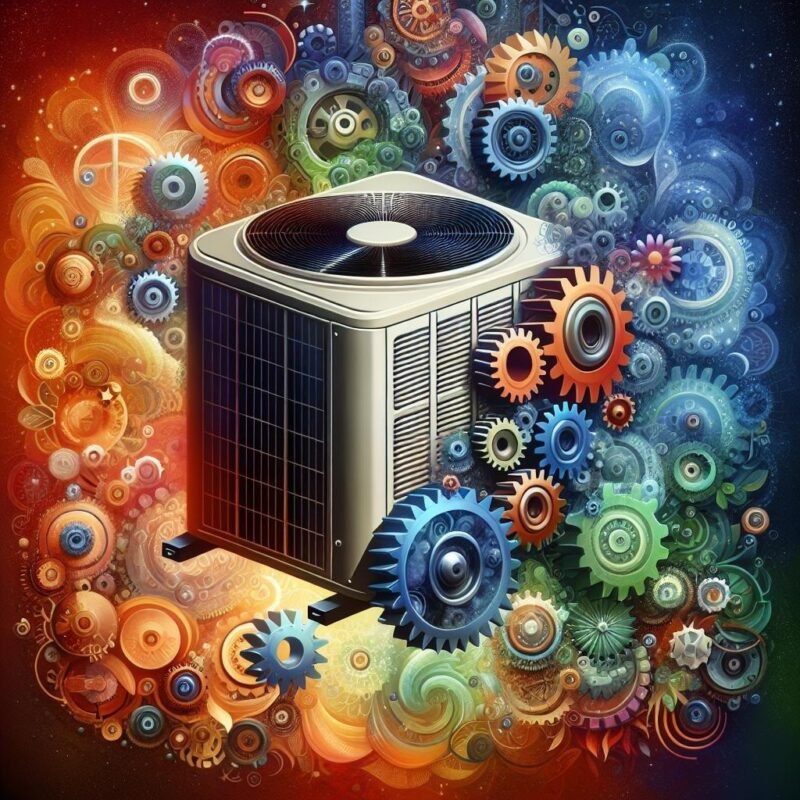Do mini split AC units require a drain line?

Picture this: You’re lounging in your perfectly cooled room, thanks to your sleek mini split AC unit mounted on the wall. But there’s a nagging question in the back of your mind - what happens to all that moisture your unit collects? As more homeowners embrace the efficiency and convenience of mini split systems, understanding their drainage needs becomes crucial. Let’s dive into the world of condensation management and discover whether these modern cooling marvels need a proper escape route for all that excess water.
Understanding Mini Split Drainage: Essential Components and Setup
The heart of your mini split’s drainage system lies in its carefully engineered components working together to handle condensation effectively. The condensate pan catches water droplets formed during the cooling process, while the drain pipe channels this collected moisture away from your living space. Most modern units feature built-in condensate pumps that automatically move water through the system, especially when gravity drainage isn’t feasible due to installation location or architectural constraints.
Setting up your mini split’s drainage requires strategic planning and proper component selection.Here are the key elements you’ll need:
- PVC drain pipe (typically 1/2 inch diameter)
- Condensate pump (for installations above ground level)
- P-trap assembly to prevent air locks
- Insulation sleeve for outdoor pipe sections
- Multiple drain line supports
| Drain Type | Best For | Installation Level |
|---|---|---|
| Gravity | Ground floor | Simple |
| Pump-assisted | Upper floors | Complex |
how your Mini Split AC Moves Water and Why It Matters
Inside your ductless system, a fascinating process unfolds as warm indoor air passes through the evaporator coil. This interaction triggers condensation, similar to water droplets forming on a cold drink on a hot summer day. The condensate collection pan catches these water drops,preventing them from dripping into your living space. Without proper water management, you might face unpleasant issues like water stains, mold growth, or even structural damage to your walls and floors.
The natural flow of gravity typically handles most of the water movement in your mini split system, but sometimes a little help is needed. That’s where condensate pumps come into play, especially when:
- Your indoor unit sits lower than the outdoor drainage point
- The installation location lacks sufficient vertical drop
- You need to move water over long horizontal distances
| Drainage Method | Best For | Maintenance Need |
|---|---|---|
| Gravity Drain | standard Installations | Low |
| condensate Pump | Complex Setups | Moderate |
Smart Solutions for Mini Split Condensate Management
Managing condensate effectively in your ductless system doesn’t have to be elaborate. Beyond traditional drain lines, you’ll find several innovative approaches worth considering. Modern condensate pumps wiht built-in sensors automatically activate when water levels rise, quietly moving moisture to suitable disposal points. Some homeowners opt for gravity-fed collection systems that connect to existing plumbing or utilize creative outdoor drainage solutions like rain gardens or decorative rock beds.
Consider these proven methods that blend functionality with aesthetic appeal:
- Condensate pump with Wi-Fi monitoring capabilities
- Decorative PVC drain line covers that match your home’s exterior
- Direct-to-garden watering systems
- Secondary overflow protection switches
| Solution Type | Best For | Maintenance Level |
|---|---|---|
| Smart Pump | Second Floor Units | Low |
| Gravity System | Ground Floor Units | Minimal |
| Garden Integration | Outdoor Areas | Moderate |
When and Where to Install Your Mini Split Drain Line
Proper placement of drain lines can make or break your mini split system’s performance. The condensate line works best when installed on the exterior wall directly beneath the indoor unit, allowing gravity to do its thing. For optimal drainage, ensure a slight downward slope of at least 1/4 inch per foot. Indoor installations require extra attention – you’ll want to route the line to a nearby sink drain, floor drain, or condensate pump to prevent any unwanted water issues.
Consider these prime locations for your drain line setup:
- Outside, near garden beds or shrubs to repurpose the water
- connected to your home’s existing drainage system
- Along exterior walls, hidden behind downspouts
- Through utility rooms with access to drain pipes
| Installation Area | Recommended Slope | common Issues |
|---|---|---|
| Exterior Wall | 1/4″ per foot | Debris buildup |
| Indoor Space | 3/8″ per foot | Condensation backup |
Q&A
Q&A: Do Mini Split AC Units Require a Drain Line?
Q1: What exactly is a mini split AC unit?
A: Great question! A mini split AC unit is a type of air conditioning system that consists of an outdoor compressor and one or more indoor air handling units. They’re known for their efficiency, quiet operation, and flexibility in cooling different spaces.
Q2: So, do mini split AC units require a drain line?
A: Yes, they do! Mini split systems remove humidity from the air, and that moisture needs to go somewhere. Most mini splits come equipped with a drain line to direct the condensed water away from the indoor unit, usually to the outside or into a designated drainage area.
Q3: What happens if the drain line isn’t installed?
A: Without a drain line, you’ll be facing a bit of a soggy situation! The excess moisture can accumulate inside the unit, leading to water damage, mold growth, or even equipment malfunction. It’s essential to have that drain line in place to keep everything flowing smoothly.
Q4: can I just let the water collect inside the unit?
A: While that might sound tempting (like a tiny indoor pool!), it’s definitely not advisable. Accumulated water can create an environment for mold and bacteria, and ultimately, it can lead to more notable problems-like needing a whole new unit!
Q5: How do I know if my mini split AC’s drain line is working correctly?
A: Good question! Keep an eye on the area around your indoor unit. If you see water pooling underneath or around it, that’s a red flag! You can also listen for unusual sounds like gurgling. A properly functioning drain should let moisture flow freely, so it’s best to check in regularly.
Q6: Is installing a drain line complicated?
A: Not at all! If you’re handy, you might even tackle it yourself. But for most folks, it’s best to leave it to the pros-especially for a new installation. They’ll ensure everything is set up correctly and running efficiently, so you can sit back and chill!
Q7: Are there any alternatives if drainage is an issue?
A: Absolutely! If your setup doesn’t allow for a traditional drain line, you might consider a mini split model with a built-in condensate pump. This nifty little gadget pumps water upward and out, making it a viable option for tricky installations.
Q8: Any final tips for new mini split owners?
A: Just remember: A little maintenance goes a long way! regularly check your drain line for clogs or kinks, and keep the area around your indoor unit clear of debris. A bit of care will keep your mini split running cool and smooth all summer long!
Feel free to reach out if you have more questions. Here’s to a cool and comfortable home! 🍃❄️
To Wrap It Up
As we wrap up our cooling conversation, it’s critically important to remember that while mini split AC units may not require a traditional drain line like their larger counterparts, managing condensation is crucial for optimal performance.Whether you choose to install a drain line or let gravity do the work,understanding the moisture management involved in your mini split system can help ensure a refreshing breeze in your home and extend the life of your unit.
So, whether you’re already basking in the cool comfort of your mini split or still weighing your options, we hope you feel armed with the knowledge to make the best decision for your space. Keep cool, stay comfortable, and never hesitate to reach out for help as you navigate this chilly journey into home climate control. After all, a little care today can make for a lot of comfort tomorrow! happy cooling!






















